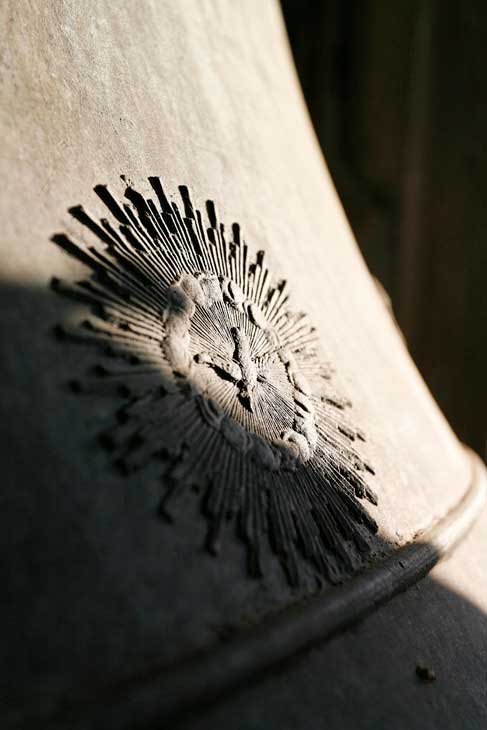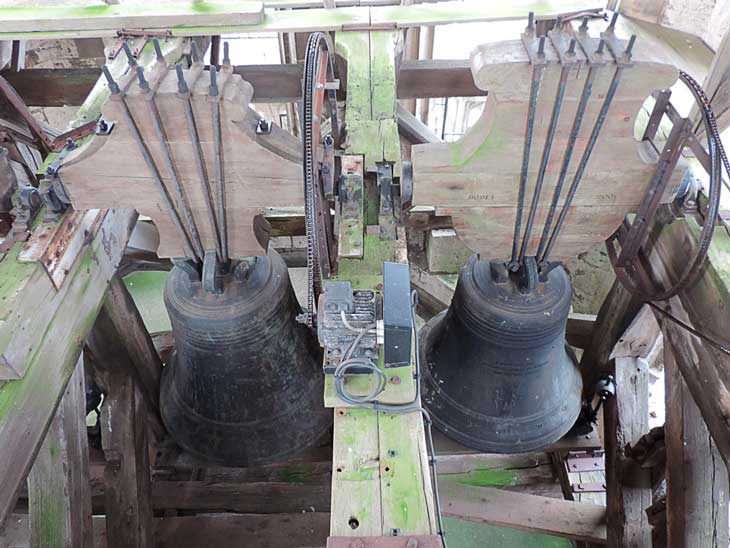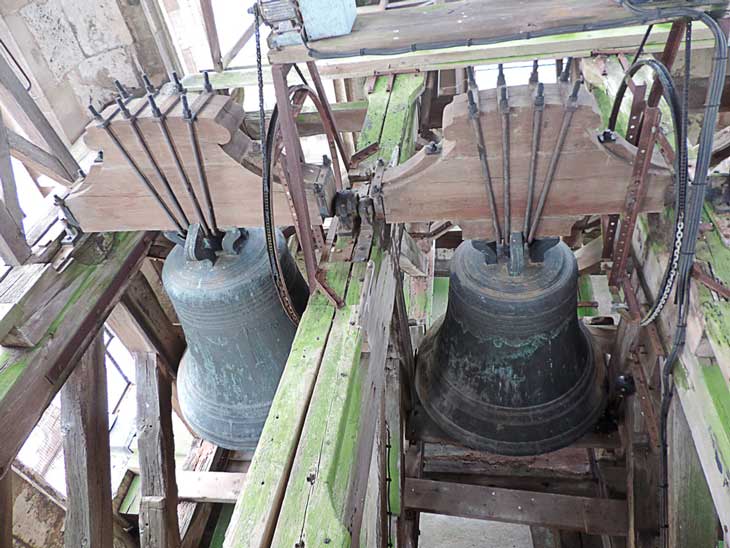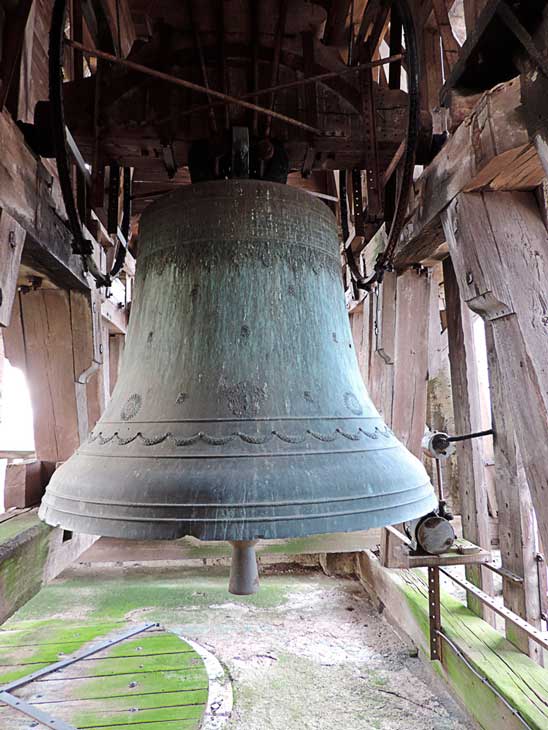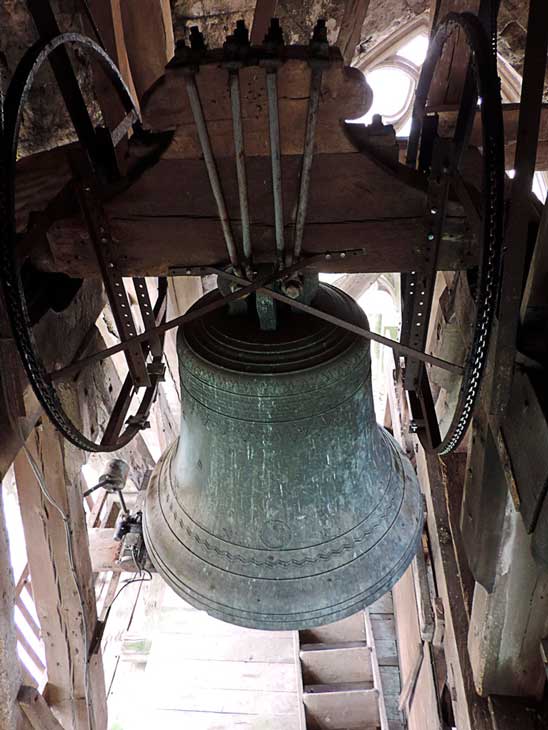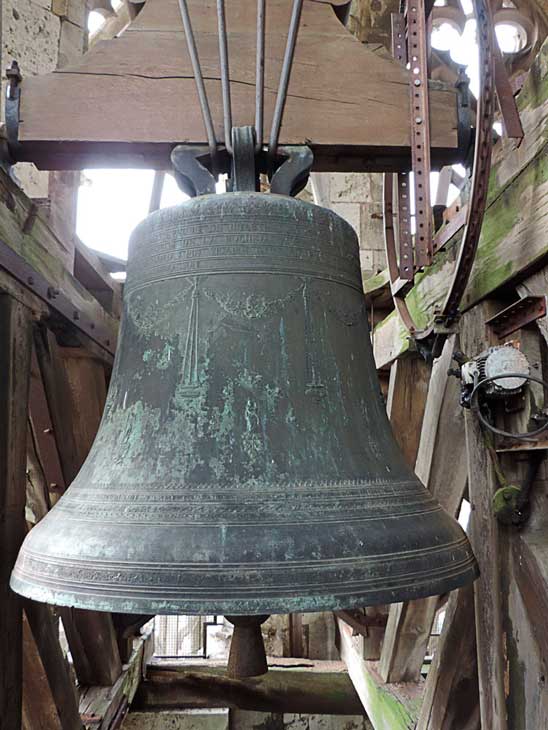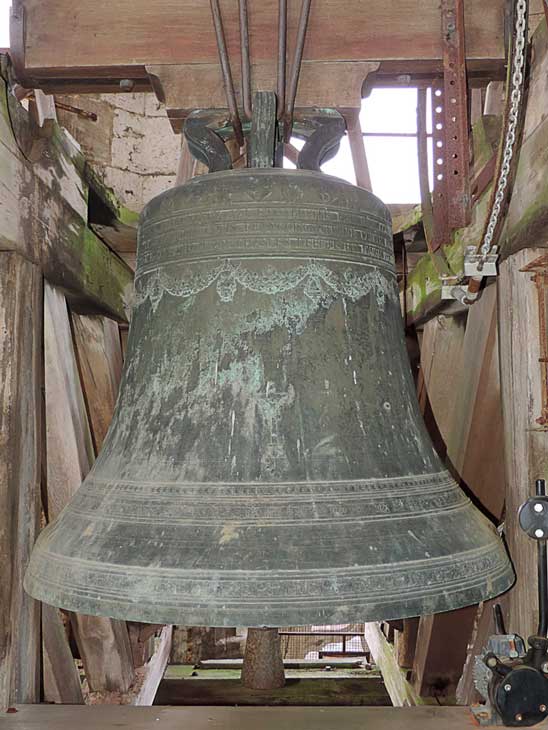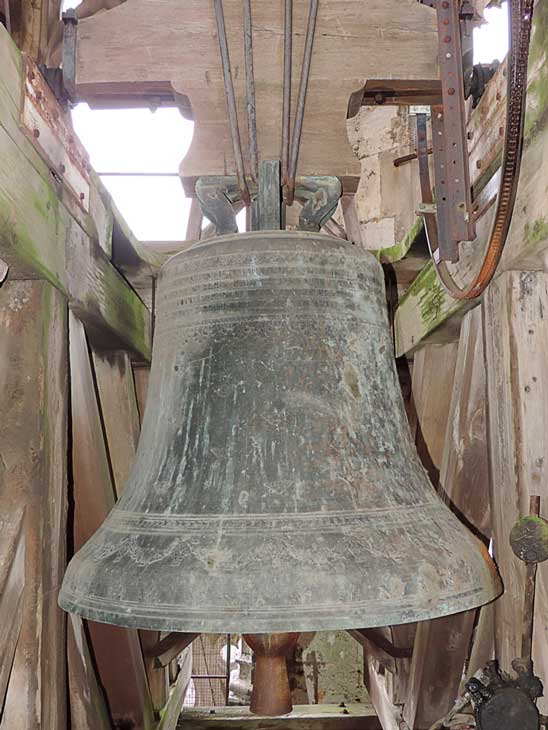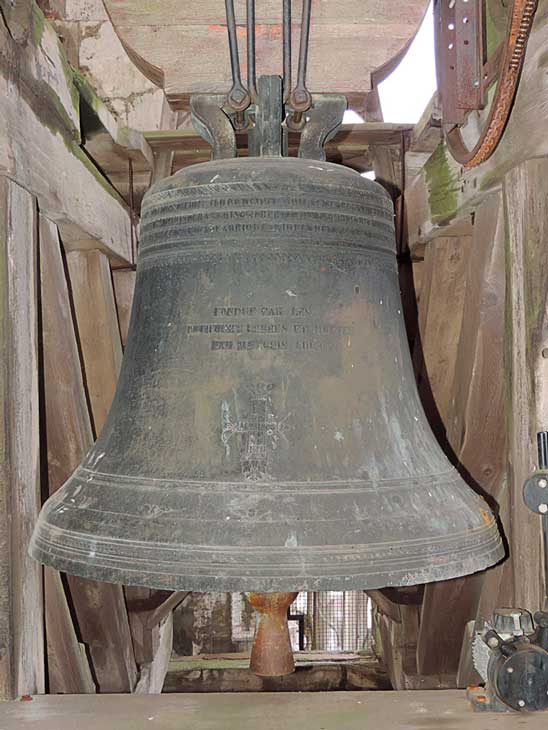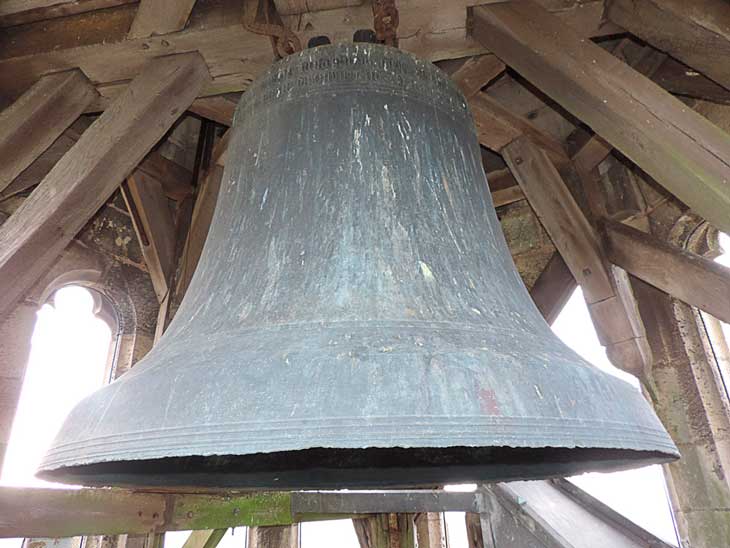“How many bells are rung for a Sunday mass… Do they increase the number of bells for certain holidays of the year… How do they ring…
Are they ‘swung’ or are they ‘struck’…”
Presentation & functioning of the bell ringing: there are six of them, since the seventh, which is also the oldest (1520) is only used to give the hours. The bell, weighing five tons, occupies the highest position of the bell tower. The other bells date from the 19th century.
| Bell n°1 (Gros Bourdon) / Christening name: MARIE Year: 1840 / cast by Cavillier frères 2,10 m / Weight: 6200 kg lower room of the north tower - north side / Note: G 2 see & listen 'Marie' | 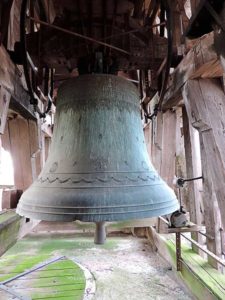 |
| Bell n°2 (Petit Bourdon) / Christening name: JOSEPH Year: 1840 / cast by Cavillier frères 1,60 m / Weight: 2350 kg lower room of the north tower - south side / Note : B 2 see & listen 'Joseph' | 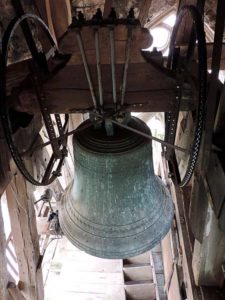 |
| Bell n°3 / Christening name: ANNE Year: 1845 / cast by Bollée-Petitfour 1,43 m / Weight: 2040 kg upper room of the north tower - south side / Note : D 3 see & listen 'Anne' | 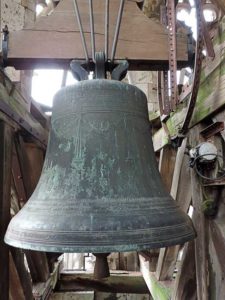 |
| Bell n°4 / Christening name: ÉLISABETH Year: 1845 /cast by Bollée-Petitfour 1,28 m / Weight: 1515 kg upper room of the north tower - south side / Note : E 3 see & listen 'Élisabeth' | 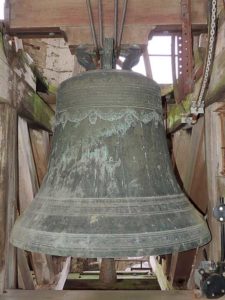 |
| Bell n°5 / Christening name: FULBERT Year: 1845 / cast by Bollée-Petitfour 1,15 m / Weight: 1095 kg upper room of the north tower - north side / Note : F sharp 3 see & listen 'Fulbert' | 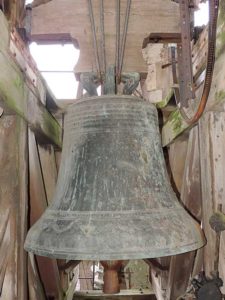 |
| Bell n°6 / Christening name: PIAT Year: 1845 / cast by Bollée-Petitfour 1,06 m / Weight: 870 kg upper room of the north tower - north side / Note : G 3 see & listen 'Piat' | 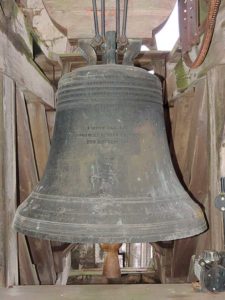 |
| Bell n°7 / Timbre Christening name: none (civil bell) Year: 1520 / cast by Pierre Savyet 1,95 m / Weight: 5000 kg classified as a historical monument on February 6, 1942 octagonal part at the top of the bell tower - base of the spire / Note : A 2 see & hear this bell | 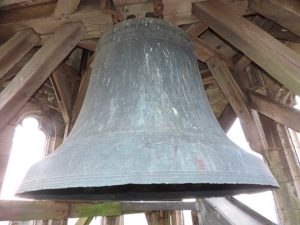 |
Let’s leave aside the angelus ringing, which takes place every day at 8:00 am, 12:00 pm and 7:00 pm, as well as the tolling of the knell, which is heard at funerals. There is indeed a real ‘gradation’ in the ringing of bells during Eucharistic celebrations, this hierarchy being based on a long tradition documented by archives – in Chartres and elsewhere.
You will find here the details of the operation, for the year 2016 :
– one bell for the daily mass at 11:45 am : the n°5.
– two bells for the Tuesday and Friday morning canonical masses: n° 2 and 5.
– three bells for the Sunday masses: n° 2, 5 and 6.
– four or six bells for the masses of great feasts – Easter, Christmas, Pentecost… : the 1, 2, 5 and 6, possibly the 3 and 4.
listen to the volley of bells (bells 1, 2, 3, 4, 5, 6)
All the bells have a striking hammer, which is used to activate the ‘Salve Regina’ chime, preceding each angelus.
However, the bells are usually rung with one (or two) swinging motors – the so-called ‘volée’ – before and after the celebrations. An exception: the bells 3 and 4 for which the flight is temporarily impossible while waiting for the restoration of the belfry, the efforts exerted on the frames risking to damage the assemblies between beams.

